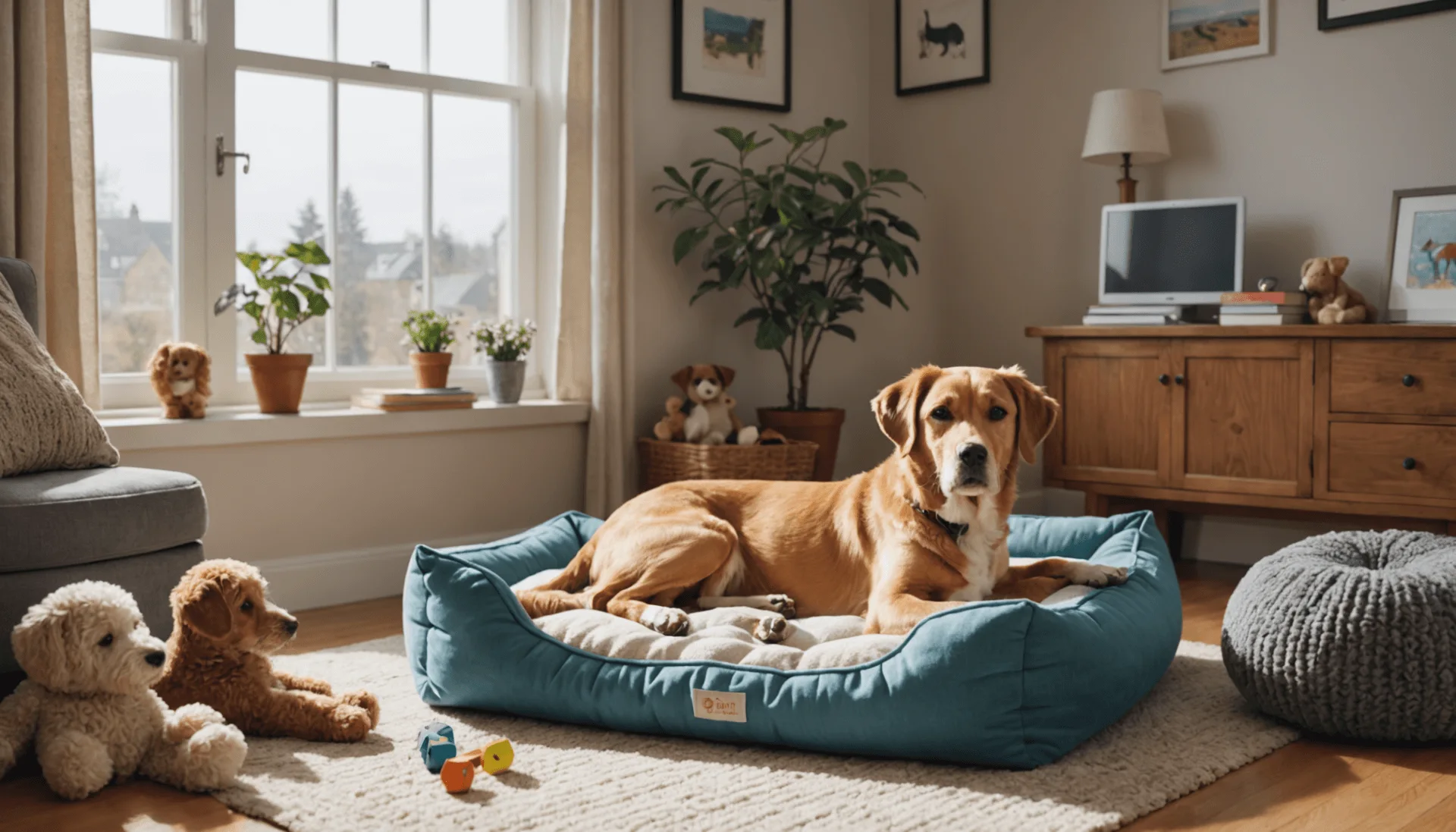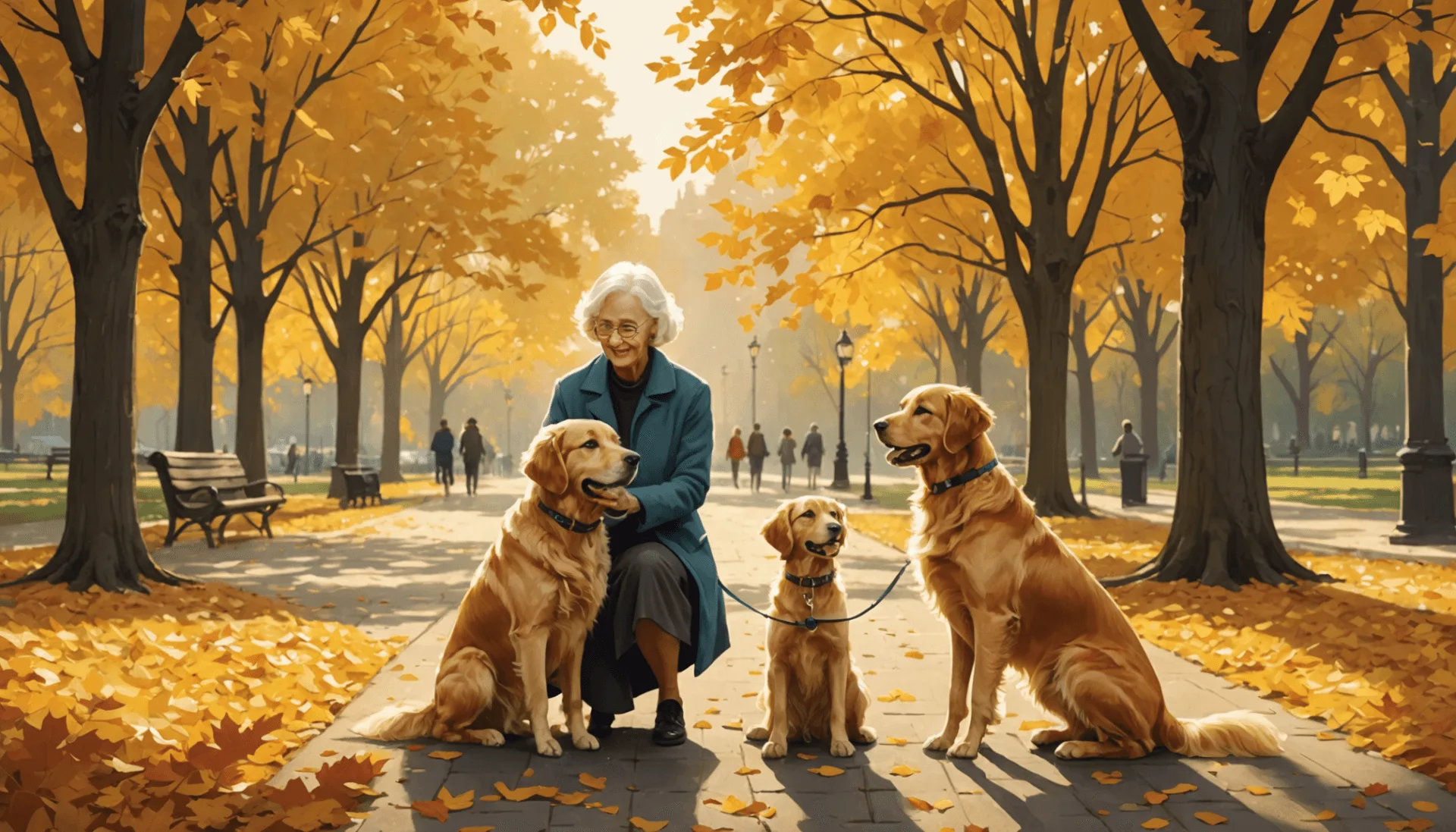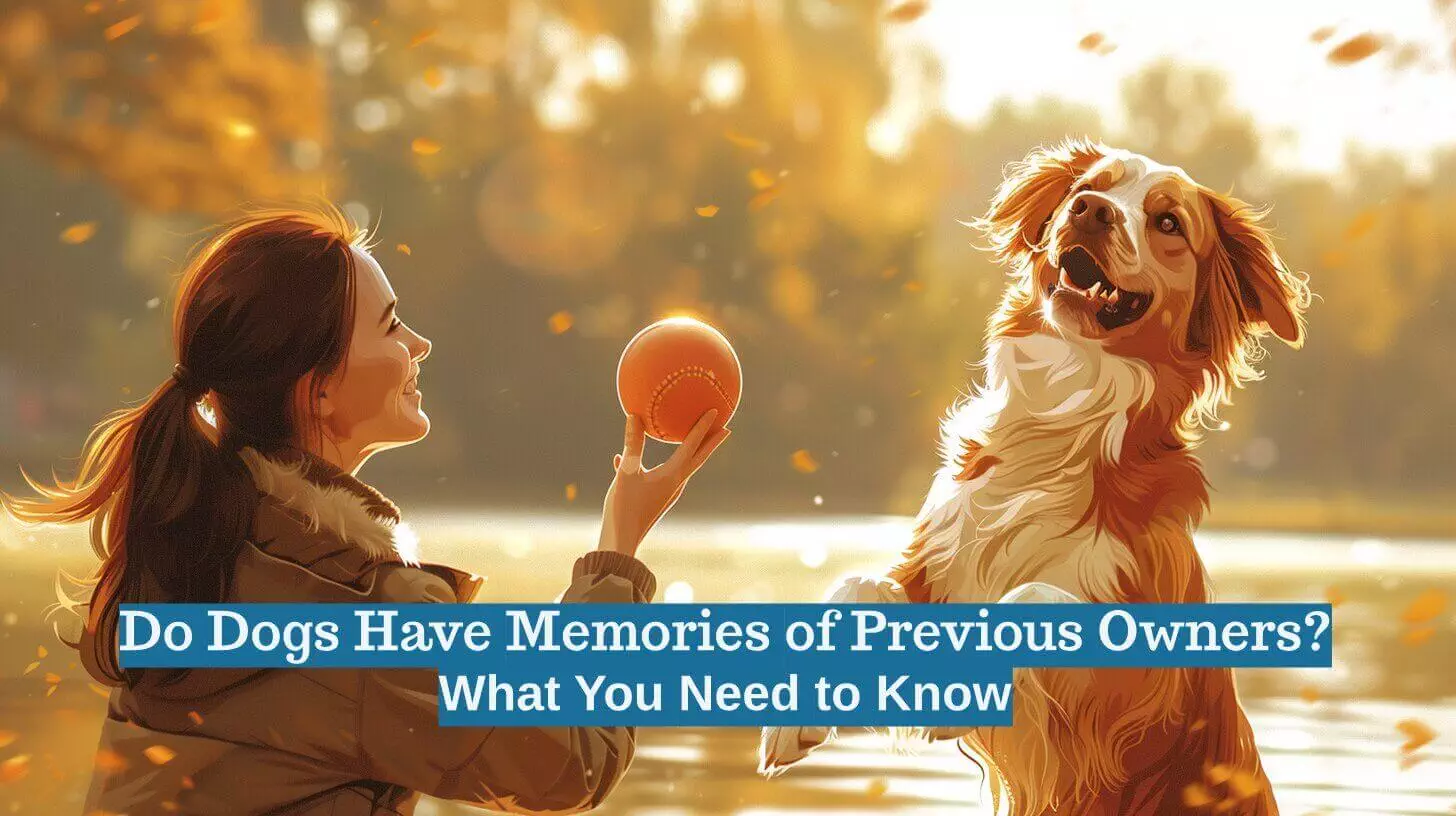Have you ever wondered about the memories of your furry friend? The question of Do Dogs Have Memories of Previous Owners is not just a curious thought—it’s crucial for understanding how our canine companions bond with us. This topic is especially important for anyone who has adopted a dog, as it can help you create a loving environment for your pet and ease their transition into a new home.
In this article, we’ll explore how dogs recognize their previous owners, the science behind canine memory, and ways to help your new pet adjust. You’ll learn about the emotional connections dogs form and what you can do to strengthen your bond with them. Ready to uncover the amazing world of dog memory? Let’s dive in!
Do Dogs Have Memories of Previous Owners?

Understanding a Dog’s Memory and Recognition
Dogs have an amazing ability to remember their previous owners. They possess both short-term and long-term memory. Short-term memory allows dogs to hold onto information for about five minutes. In contrast, their long-term memory can last for months or even years. This remarkable memory often results from the strong emotional bonds they create with people.
For example, a dog may remember someone they haven’t seen for a long time if they shared a close relationship. This deep emotional connection significantly enhances their memory, affecting how they behave and interact with their owners.
How Dogs Recognize Their Previous Owners
Dogs mainly use their incredible sense of smell to recognize people. Their olfactory system is highly developed, allowing them to detect familiar scents. When a dog smells a familiar scent, it can trigger memories of that person. This ability helps dogs remember their previous owners, even after long separations.
Dogs can also recognize scents from familiar places, adding another layer to their understanding of their environment.
Factors Influencing Memory in Dogs
Several factors influence a dog’s memory capabilities:
- Age: Younger dogs generally have better memory retention than older dogs.
- Emotional Experiences: Positive interactions create stronger memories, while negative experiences may lead to fading or negative associations.
- Bonding Moments: Dogs that shared more bonding moments with their owners tend to have stronger memories.
| Factor | Description |
|---|---|
| Age | Younger dogs usually remember better. |
| Emotional Experiences | Positive experiences strengthen memories. |
| Bonding Moments | More time together means stronger memories. |
The Science Behind Dog Memory and Past Owners

Exploring Long-Term Memory in Dogs
Dogs have amazing animal memory abilities. Research shows that while dogs’ short-term memory lasts about five minutes, their long-term memory can last for months or even years. This long-term memory happens because of the strong emotional bonds they form with their owners. Dogs who receive love and care tend to remember their owners longer. Emotional connections significantly impact how dogs remember people and experiences.
| Memory Type | Duration | Influence of Emotional Bonds |
|---|---|---|
| Short-Term Memory | About 5 minutes | Limited |
| Long-Term Memory | Months to years | Strong impact |
Evidence of Dogs Recognizing Scent from Past Owners
A dog’s sense of smell is incredibly strong, far more developed than that of humans. This amazing sense allows dogs to recognize familiar scents, including those of their previous owners. When a dog smells a familiar scent, it can trigger memories and strong emotional responses.
For example, a dog may feel excited or anxious when encountering a former owner’s scent. This connection highlights how dogs navigate their world through smell and how it helps them recall memories.
- Dogs can remember their previous owners even after being rehomed for years.
- Their sense of smell can recall scents that trigger memories and emotions.
The Role of Emotional Bonds in Dog Memory
The emotional bond between dogs and their owners is crucial for memory retention. Dogs are social animals that thrive on connections with humans. They remember those who provide affection and security. When a dog feels a strong attachment, it enhances their memory of that person.
Signs of sadness or stress may indicate that a dog misses a previous owner. Emotional connections and strong scent recognition shape how dogs remember their past.
How New Owners Can Help Dogs Transition

Developing a New Bond with Your Dog
New owners play a vital role in helping their adopted dogs adjust. Spending quality time together helps build trust. Daily walks, playtime, or simply sitting near each other creates bonding moments. Engaging in training sessions, like teaching basic commands, can strengthen the bond. This positive reinforcement supports learning and trust.
It’s important to remain patient. Adjusting may take time for a dog with a previous owner. Understanding your dog’s needs and preferences is crucial. Each interaction is an opportunity to foster a trusting relationship. This new bond can lead to a happy, confident dog.
Signs That Your Dog Misses Their Past Owner
When dogs miss their previous owners, they may show specific behaviors. Common signs of anxiety or depression include:
- Excessive barking or whining
- Hiding or withdrawing from activities
- Changes in appetite, such as eating less or refusing food
Other signs may include searching for familiar scents or pacing around the house. If a dog seems lethargic or less playful, it could indicate missing their former owner. Observing these behaviors can help new owners provide the right support.
Techniques for Easing the Transition for Your Pet
Helping a new dog adjust involves several strategies. Introducing familiar smells from the previous home can be comforting. This could be a blanket or a toy carrying their former owner’s scent. Maintaining a consistent routine, such as regular feeding times and walks, helps dogs feel secure.
Creating a safe space is also essential. A quiet area with a comfortable bed can provide refuge for a nervous dog. Gradually introducing the dog to new people and environments helps build confidence. Patience and understanding are key during this adjustment period.
| Techniques for Easing Transition | Description |
|---|---|
| Familiar Smells | Introduce toys or blankets from the previous home to provide comfort. |
| Consistent Routine | Establish regular feeding times and walks for predictability. |
| Safe Space | Create a quiet area with a bed for the dog to relax. |
| Gradual Introductions | Slowly introduce the dog to new people and environments. |
Using these strategies can help your dog feel more at home. A positive environment encourages the development of a strong bond, benefiting both the dog and owner. [Tryfi].
The Emotional Impact of Rehoming a Dog

Understanding the Cruelty of Separating Dogs from Their Owners
Rehoming a dog can be painful for both the animal and its owner. Dogs are social creatures that form strong bonds with their human families. When separated, they can experience significant emotional distress. This separation can lead to anxiety, confusion, and depression.
Dogs thrive on companionship and stability, and being removed from their familiar environment disrupts these needs. Their social nature means they often look for comfort within their pack. When that pack is lost, it can create a sense of loneliness and fear.
Dogs may react to this separation in various ways. They might whine, pace, or engage in destructive behavior as a way to cope with their feelings. This distress is not just about losing their owner; it is also about losing the security of their home and routine.
Ways to Help Your Pet Adjust to a New Home
Adjusting to a new home can be challenging for a dog, but several strategies can ease this process:
- Create a Stable Environment: Establish consistent routines for feeding, walking, and playing. This helps the dog feel secure in their new surroundings.
- Use Positive Reinforcement: Employ treats and praise for desired behaviors to build trust. Providing comfort items, like a blanket or toy from their past, can help ease anxiety.
Moreover, introducing the dog to their new environment slowly is important. Allowing the dog to explore at their own pace can reduce stress. Engaging in playtime and bonding activities can strengthen the relationship between the dog and the new owner.
Long-Term Implications of a Dog’s History on Behavior
A dog’s past experiences significantly shape its future behavior. Dogs that have been rehomed may carry emotional scars from previous transitions, which can manifest as anxiety or trust issues. For example, a dog that suffered neglect may have a harder time trusting new owners. Understanding this history is vital for providing the best care possible.
Socialization skills can also be impacted. Dogs that experienced a stable, loving home may adapt more quickly than those that faced instability. New owners need to be patient and aware of these behaviors. Offering support and understanding can help a dog overcome past traumas and build new, positive experiences.
| Adjustment Tips | Benefits |
|---|---|
| Maintain consistent routines | Provides security and predictability |
| Use positive reinforcement training | Builds trust and encourages good behavior |
| Introduce new environments slowly | Reduces stress and anxiety |
| Provide comfort items from the past | Offers a sense of safety and familiarity |
Research and Expert Insights on Canine Memory

Key Studies on Dog Memory and Recognition
Recent studies on canine memory reveal fascinating insights into how dogs recognize their previous owners. One prominent study by researchers like Claudia Fugazza and András Miklósi explores the concept of associative memory in dogs.
Unlike humans, dogs do not have episodic memory, which is the ability to recall personal experiences. Instead, they remember specific cues linked to their past experiences. This ability allows dogs to recognize their previous owners primarily through scent and emotional connections. This reliance on cues means that dogs excel in forming strong associations with their surroundings, making them highly adept at identifying familiar people and places. This phenomenon is evident in interactions between dad dogs and puppy recognition, as the older dogs often instinctively guide and nurture younger ones by exhibiting behaviors that are familiar to them. Consequently, these bonds and memories created through senses play a crucial role in a dog’s social interactions and overall emotional well-being.
For example, when a dog encounters a familiar scent, it can trigger memories associated with that person, strengthening their bond. This research emphasizes the unique way dogs experience and process memories compared to humans.
| Memory Type | Description | Example |
|---|---|---|
| Associative Memory | Remembers cues linked to past experiences | Recognizing a previous owner’s scent |
| Emotional Memory | Retains memories tied to emotions | Feeling happy from past bonding moments |
Studies also show that emotional experiences significantly influence a dog’s memory retention. Dogs who share strong emotional bonds with their previous owners are more likely to remember them.
The presence of stress or happiness during their time with past owners can lead to stronger memory retention. These findings shed light on the complex nature of canine memory and how emotions play a crucial role in their recognition abilities.
Expert Recommendations for Dog Owners
Experts suggest several strategies for new dog owners to help their pets adjust while considering their memory capabilities. One of the main recommendations is to be aware of a dog’s emotional needs. When bringing a new dog home, providing a stable and loving environment is essential. Consistency in care and routine can significantly impact a dog’s adjustment period.
- Patience is Key: Dogs may show signs of distress or anxiety related to their past experiences.
- Observe Behavior: Understanding behaviors that indicate a dog misses its previous owner can help new owners adapt their approach.
Providing positive reinforcement, such as treats or praise, can encourage desirable behaviors and strengthen the bond. Finally, owners can help their dogs by gradually exposing them to new experiences, people, and environments. This gradual introduction allows dogs to feel secure in their new surroundings and helps build trust in their new owners. [Tryfi]
Future Trends in Understanding Dog Cognition
As research continues to evolve, new trends are emerging in the field of canine cognition. Future studies aim to explore how different breeds process memories and recognize their owners. Understanding breed-specific differences may lead to better training methods and care strategies tailored to each dog’s needs.
Another trend involves using advanced technology to assess canine memory and cognition. Researchers are developing innovative tools that measure dogs’ memory task performance and recognition abilities. These methods will provide deeper insights into how dogs remember and recall experiences.
Furthermore, the impact of training on memory retention is gaining attention. Studies may focus on how various training techniques affect a dog’s ability to remember commands and past experiences. This understanding could lead to more effective training methods that enhance memory retention and improve the overall dog-human bond. [Medium]
Additional Considerations for Dog Owners

The Importance of Building Trust with Your Dog
Building trust is crucial for a strong bond between a dog and its new owner. Many dogs come from stressful or traumatic situations. Establishing trust helps them feel safe in their new homes.
You can build trust through consistent routines, positive interactions, and patience. Regular feeding times and daily walks create a sense of security. Using positive reinforcement during training helps as well. When dogs learn to associate their new owners with treats and affection, they become more confident.
Be mindful of your body language. Dogs are sensitive to non-verbal cues, so calm gestures can make a big difference. A gentle approach reassures dogs that they are in a safe place. The bond formed through trust allows dogs to thrive in their new environments.
Long-Term Behavioral Observations in Rehomed Dogs
Long-term observations of rehomed dogs show various behaviors linked to their past experiences. Dogs that have positive rehoming experiences adapt well and bond with new owners. They typically exhibit less anxiety and more confidence over time.
Conversely, dogs with negative experiences may show fearful or aggressive behaviors. For example, rescue dogs that were mistreated often need more time to adjust. They might initially act defensively or avoid interactions.
Veterinary professionals recommend gradual introductions to new people and environments. This approach helps alleviate stress. Consistency in routines also plays a vital role in fostering a sense of belonging. With time and support, many rehomed dogs can overcome past traumas and thrive in new homes.
| Dog’s Behavior | Expected Response | Recommended Action |
|---|---|---|
| Searching for scents | Signs of missing past owners | Provide familiar items |
| Anxious behavior | Indicators of stress | Maintain a calm atmosphere |
| Defensive actions | Response to fear | Gradual introductions to new people |
Conclusion
In this article, we explored whether dogs have memories of their previous owners. We learned that dogs can recognize scents and experience strong emotional connections, which helps them remember important people in their lives. Additionally, we discussed how new owners can help their pets transition and form new bonds, making the adjustment easier for everyone involved.
Understanding canine memory is not just fascinating; it shows how much we can do to support our furry friends. By building trust and being attentive to their behaviors, we can create a safe and loving environment. Keep exploring the amazing world of dogs and their memories, and you’ll discover even more about the incredible bond we share with our pet companions!
FAQs
1. Do dogs have the ability to remember their previous owners?
While dogs don’t have full-fledged episodic memory like humans, they can retain memories of previous owners through emotional and episodic-like memories, especially when those experiences were linked to strong emotions like fear or happiness.
2. How do dogs remember experiences from their past?
Dogs have a combination of implicit and episodic-like memory. They can recall specific moments, such as the exact moment of a dangerous situation, or experiences with familiar people, but their memory is generally not as detailed or long-lasting as human memories.
3. Can a dog form a bond with new owners after being adopted?
Yes, dogs are capable of bonding with new owners, particularly when the new environment provides consistent care, communication, and positive interactions. Their emotional brain helps them form attachments, even after extended periods of time.
4. Does a dog’s memory capacity decline as they age?
Yes, similar to humans, geriatric dogs may experience memory erosion. Aging can affect their long-term memory system, including both semantic and spatial memory, making it harder for them to remember past experiences or familiar people.
5. How does training affect a dog’s memory?
Dogs have a strong ability to remember actions on command, especially with regular, consistent training. The duration of training sessions and emotional reinforcement can help strengthen their procedural and implicit memory, allowing them to recall specific actions over time.

